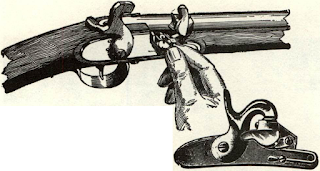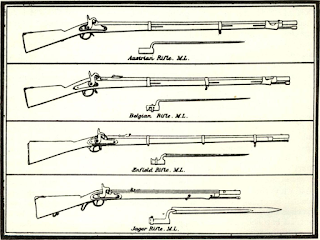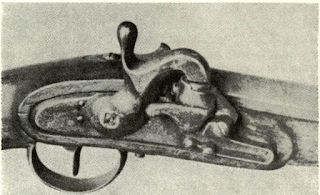Of secondary importance to the Lorenz arms but
Hermann Boker & Company, “Guns & Hardware,”
Major Alfred Mordecai, on a military mission to
Mordecai noted also that both smoothbores and
Two varieties of Consol lock existed. The
The original Consol cartridge had a primer fastened
rifles, was retained by wads top and bottom in the
Augustin’s improvement consisted of placing a small
The Army’s “Instructions for making Quarterly
Said Crispin of Sample No. 1: “This arm is caliber
No. 2 Boker arm was the Austrian Lorenz
No. 3 Broker arm was the same Lorenz rifle musket
The No. 4 Boker gun was also the Lorenz rifle musket, bored to .58 inch. “It is finished, in some respects,”
Hermann Boker & Company, “Guns & Hardware,”
Major Alfred Mordecai, on a military mission to
Mordecai noted also that both smoothbores and
Two varieties of Consol lock existed. The
The original Consol cartridge had a primer fastened
rifles, was retained by wads top and bottom in the
Augustin’s improvement consisted of placing a small
The Army’s “Instructions for making Quarterly
Said Crispin of Sample No. 1: “This arm is caliber
No. 2 Boker arm was the Austrian Lorenz
No. 3 Broker arm was the same Lorenz rifle musket
The No. 4 Boker gun was also the Lorenz rifle musket, bored to .58 inch. “It is finished, in some respects,”



Comments
Post a Comment